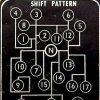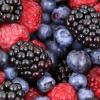This paper offers some ideas for increasing cellular [NAD+].
Houtkooper, Riekelt H., and Johan Auwerx. "Exploring the therapeutic space around NAD+." The Journal of cell biology 199.2 (2012): 205-209.Brief literature searches offer these possible interventions:
Precursors:diet/supplements: nicotinamide, nicotinamide riboside, nicotinic acid, tryptophan
experimental: nicotinamide mononucleotide
AMPK inducers:lifestyle: caloric restriction, fasting, endurance exercise
diet/supplements: aspirin, berberine, resveratrol, quercetin, anthocyanins, genistein, EGCG, capsaicin, curcumin, garlic oil, hispidulin (Snow Lotus), glabridin (deglycyrrhizinated licorice), gelegine (goats rue)
prescription drugs: metformin, phenformin, rosiglitazone, pioglitazone, troglitazone, salsalate, phenobarbital
experimental: 5-aminoimidazole-4-carboxamide riboside (Acadesine, AICAR), dinitrophenol, oligomycin, 2-deoxyglucose, A23187, A769662, PT1
poly (ADP-ribose) polymerase-1 (PARP-1) inhibitors:supplements: nicotinamide
experimental: H2O2, 3-aminobenzamide, 1,5-dehydroxyisoquinoline, 5-aminoisoquinolinone, 1,5-isoquinolinediol, N-(6-oxo-5,6-dihydro-phenanthridin-2-yl) -N,N-dimethylacetamide (PJ-34), 5-iodo-6-amino-1,2-benzopyrone; thieno[2,3-c]isoquinolin-5-one, BGP-15, GPI 6150, INO-1001, L-2286
Sirtuin inhibitors (on balance, maybe not a good idea):
supplements: nicotinamide, nicotinamide riboside
experimental: NADH, carbamido-NAD, dihydrocoumarin, splitomicin, 2-OH-napthaldehyde, sirtinol, M15
Another useful review is:
Bogan, Katrina L., and Charles Brenner. "Nicotinic acid, nicotinamide, and nicotinamide riboside: a molecular evaluation of NAD+ precursor vitamins in human nutrition." Annu. Rev. Nutr. 28 (2008): 115-130.High dose nicotinic acid used to treat dyslipidemia has well known skin flushing side effect. Nicotinamide doesn't cause flushing, but
lacks the lipid benefits, and may be
hepatotoxic at high doses. Nicotinamide riboside shouldn't cause flushing, and has much greater potential to increase [NAD+] in neurons, but its potential for high-dose hepatoxicity has not been evaluated, and like nicotinamide, its also a potential inhibitor of sirtuins:
Sasaki, Yo, Toshiyuki Araki, and Jeffrey Milbrandt. "Stimulation of nicotinamide adenine dinucleotide biosynthetic pathways delays axonal degeneration after axotomy." The Journal of neuroscience 26.33 (2006): 8484-8491.Belenky, Peter, et al. "Nicotinamide riboside promotes Sir2 silencing and extends lifespan via Nrk and Urh1/Pnp1/Meu1 pathways to NAD." Cell 129.3 (2007): 473-484.I suspect one could achieve fairly high [NAD+] with far less than 500 mg/kg of a research reagent by combining high-dose nicotinic acid (if the flushing is tolerable) or more moderate-dose nicotinamide riboside (superior for brain [NAD+], but I'd like to see if it inhibits Sirt1), intermittent fasting + endurance exercise, a high polyphenol diet, aspirin (at
AMPK activating dosages), and optionally, berberine or metformin.
Edited by Darryl, 21 December 2013 - 02:10 AM.






















































